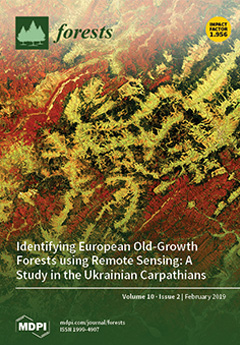A wide range of species and hybrids of black and balsam poplars or cottonwoods (
Populus L., sections
Aigeiros and
Tacamahaca) grow naturally, or have been introduced to grow in plantations in China. Many species of
Melampsora can cause poplar leaf rust in China, and their distributions and host specificities are not entirely known. This study was prompted by the new susceptibility of a previously resistant cultivar, cv. ‘Zhonghua hongye’ of
Populus deltoides (section
Aigeiros), as well as by the need to know more about the broader context of poplar leaf rust in China. Rust surveys from 2015 through 2018 in Shaanxi, Sichuan, Gansu, Henan, Shanxi, Qinghai, Beijing, and Inner Mongolia revealed some samples with urediniospores with the echinulation pattern of
M. medusae. The morphological characteristics of urediniospores and teliospores from poplar species of the region were further examined with light and scanning electron microscopy. Phylogenetic analysis based on sequences of the rDNA ITS region (ITS
1, 5.8S rRNA gene, and ITS
2) and the nuclear large subunit rDNA (D
1/D
2) was used to further confirm morphology-based identification. Based on combined analyses, five of the fifteen fully characterized samples were identified as
Melampsora medusae: one from Shaanxi and four from Sichuan. Two of the five were from
Populus deltoides cv. ‘Zhonghua hongye’. Three others were identified on
Populus szechuanica,
P. simonii, and
P. yunnanensis. Additional samples of
M. medusae were collected in Shaanxi in 2017 and 2018, and from Henan in 2015 through 2018. Altogether these findings show that this introduced pathogen is widespread and persistent from year to year in China. This is the first report of this North American poplar leaf rust species,
Melampsora medusae, in China. It has previously been reported outside North America in Argentina, Europe, Australia, New Zealand, Japan, and Russia.
Full article





